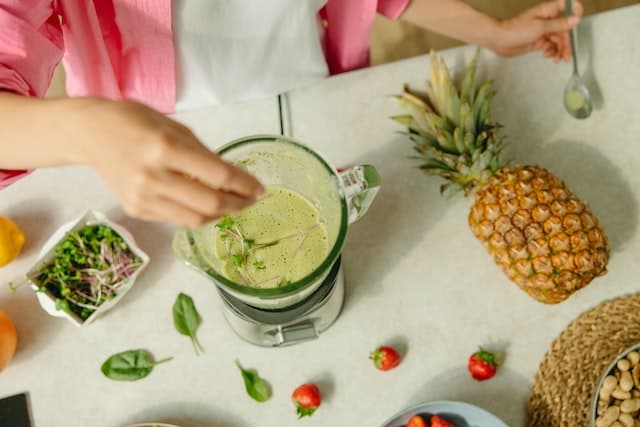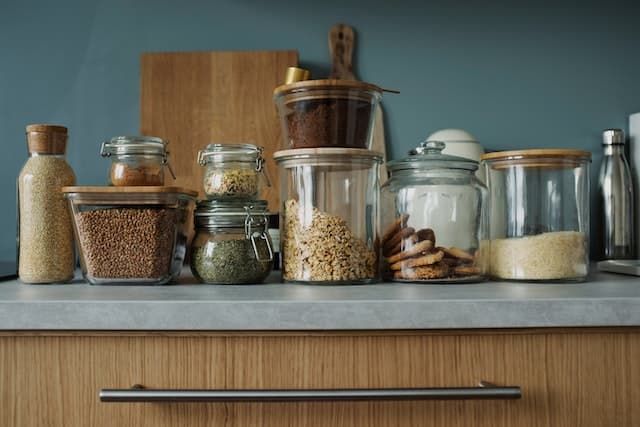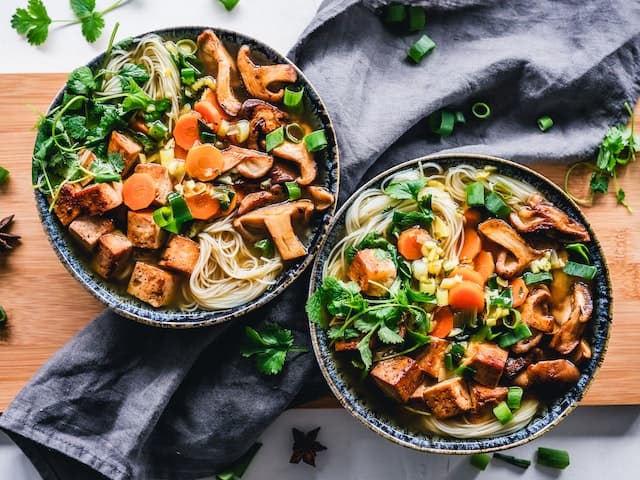Embarking on a new home journey? Consider your gut. Crafting a digestive-friendly kitchen can transform your culinary space into a haven for gut health. Moreover, a well-organized cooking arena nudges us towards better food choices. We empower our digestion by prioritizing tools, pantry essentials, and optimal storage.
Furthermore, with the right ambiance, even mealtime becomes a restorative ritual. Let’s dive deep, uncovering the secrets to setting up a space that’s kind to our stomachs and delightful for our taste buds. Ready to make your gastronomic corner both appealing and beneficial? Let’s begin.
The Importance of a Digestive-Friendly Kitchen
Your gut plays a pivotal role in overall health. Hence, having a culinary space designed for digestion isn’t just a trend. Firstly, the foods we select directly impact our gut’s well-being. Furthermore, a tailored kitchen space encourages mindful eating. By optimizing our pantry and tools, we boost our chances of making gut-friendly choices.
Additionally, organized storage preserves food’s integrity, promoting better digestion. Equally vital, a kitchen that supports digestive health reduces ailments linked to poor eating. By crafting a space geared toward gut health, we’re investing in our well-being. Every meal becomes a step toward optimal health.

Having the appropriate appliances in your digestive-friendly kitchen may improve your health.
Essential Appliances and Tools
Equipping your cooking space with the right gadgets can elevate your gut health game:
- Blenders and juicers make nutrient-packed smoothies and juices accessible.
- A steamer ensures veggies retain nutrients, aiding digestion. Meanwhile, a yogurt maker offers the luxury of homemade, probiotic-rich delights. Moving on, a food processor simplifies creating gut-friendly spreads like hummus.
- Consider glass containers; they’re eco-friendly and toxin-free.
Investing in these tools is pivotal for a stomach-friendly gastronomic arena. As we hone our culinary skills, having the right appliances at arm’s length can make all the difference. Dive in and transform your meals!
Pantry Essentials
Stocking up your pantry is the cornerstone of a digestive-friendly kitchen. First and foremost, whole grains like quinoa and oats should be staples. These grains promote gut health. Next, digestive aids such as ginger and peppermint offer natural relief. Additionally, fermented foods, notably kimchi and sauerkraut, provide essential probiotics. Don’t forget prebiotic foods: garlic, onions, and asparagus nourish our gut bacteria. Lastly, healthy fats like avocados and chia seeds offer multiple benefits. In essence, a well-curated pantry serves as the backbone for gut-friendly meals. Ensuring these essentials are within reach sets the stage for a healthier, happier tummy.
Proper Storage for Gut Health
Mastering food storage goes hand in hand with maintaining gut health. Freshness is key. To begin, ensure fruits and veggies are stored to retain vitality. Also, understand that fermented foods, rich in probiotics, require special attention; most thrive in cooler environments. Moreover, airtight containers keep moisture out, preventing unwanted mold and preserving nutrients. On another note, clear containers can help you quickly identify and consume foods before they spoil. Good storage not only reduces waste but also promotes better digestion. Proper storage acts as a guardian, ensuring every bite contributes positively to our digestive journey.

Stock your pantry with healthy foods.
Setting Up a Hydration Station
Hydration holds paramount importance in digestion. Thus, creating a dedicated hydration corner can be transformative. Start with a designated spot for filtered water. Next, consider adding refreshing herbs or fruits. Herbal teas, boasting digestive benefits, should find a home here too. Warm lemon water, especially in the morning, can kickstart the digestive process.
Moreover, having a visually appealing hydration station might just motivate more frequent sips. This nook will also serve as a constant reminder in your culinary realm. It champions the vital role of liquids in digestion. So, take a sip, hydrate, and embrace the path to a happier gut!
Creating a Relaxing Eating Environment
Creating a relaxing eating environment is essential when setting up a digestive-friendly kitchen in your new home. It’s more than just the foods you choose; it’s also about the atmosphere you create. Consider the layout of your dining area, opting for comfortable seating and a soothing color scheme that promotes a sense of tranquility. This ambiance can do wonders for your digestion by encouraging mindful eating and reducing stress during meals.
If you’ve recently made a big move, such as an interstate move from Florida to Kentucky, it’s crucial to prioritize this aspect of your home setup. The change in surroundings can be overwhelming, but creating a serene dining space can be a comforting anchor. Don’t hesitate to seek assistance, as pros can help you transition into your new life. In Kentucky’s vibrant environment, where fresh and healthy foods abound, having a relaxing eating space can enhance your overall well-being and make your digestive health journey even more enjoyable.
Gut-Friendly Cooking Techniques
Cooking techniques can greatly influence our digestive health. Slow cooking, for instance, tenderizes food, making it easier on the stomach. Steaming, in contrast to frying, retains more nutrients while reducing greasiness, thus promoting smoother digestion. Dive into the world of digestive herbs and spices, too; incorporating ingredients like ginger or fennel can offer not just flavor but gut-relief benefits. It’s also worth noting that overcooking can rob foods of their digestive-friendly properties. In the grand culinary dance, adopting these techniques ensures each meal nourishes and supports our gut. So, next time you’re at the stove, remember: how you cook matters just as much as what you cook.

Including herbs like ginger or fennel can provide flavor and digestive benefits.
Keeping Your Kitchen Clean and Safe
A pristine culinary space is a linchpin for optimal digestion. Cleanliness wards off contaminants that can upset our gut. But beyond daily wipe-downs, consider safe, non-toxic cleaning agents that won’t harm your health. Cross-contamination, especially from raw foods, can be a silent adversary. Adopt habits like separate cutting boards for meats and veggies.
Furthermore, ensuring dry countertops and sinks prevents mold and bacteria growth. Your kitchen should be a sanctuary, free of harmful elements. By making safety and hygiene paramount, you champion not only your digestive health but also the overall well-being of those you feed. Dive into these habits and savor the healthful rewards.
Conclusion
In sum, cultivating a digestive-friendly kitchen goes beyond aesthetic appeal; it’s an investment in well-being. From selecting the right tools to ensuring optimal food storage, every choice impacts our gut’s health. Adopting the right cooking techniques and creating a serene dining ambiance further elevates the experience. Above all, a clean, safe environment lays the foundation for every nutritious meal. As we’ve explored, your culinary space can be a fortress for digestion when curated thoughtfully. Embrace these insights, set up your healthful haven, and embark on a journey where every bite nurtures and sustains. Here’s to healthier, happier mealtimes!
